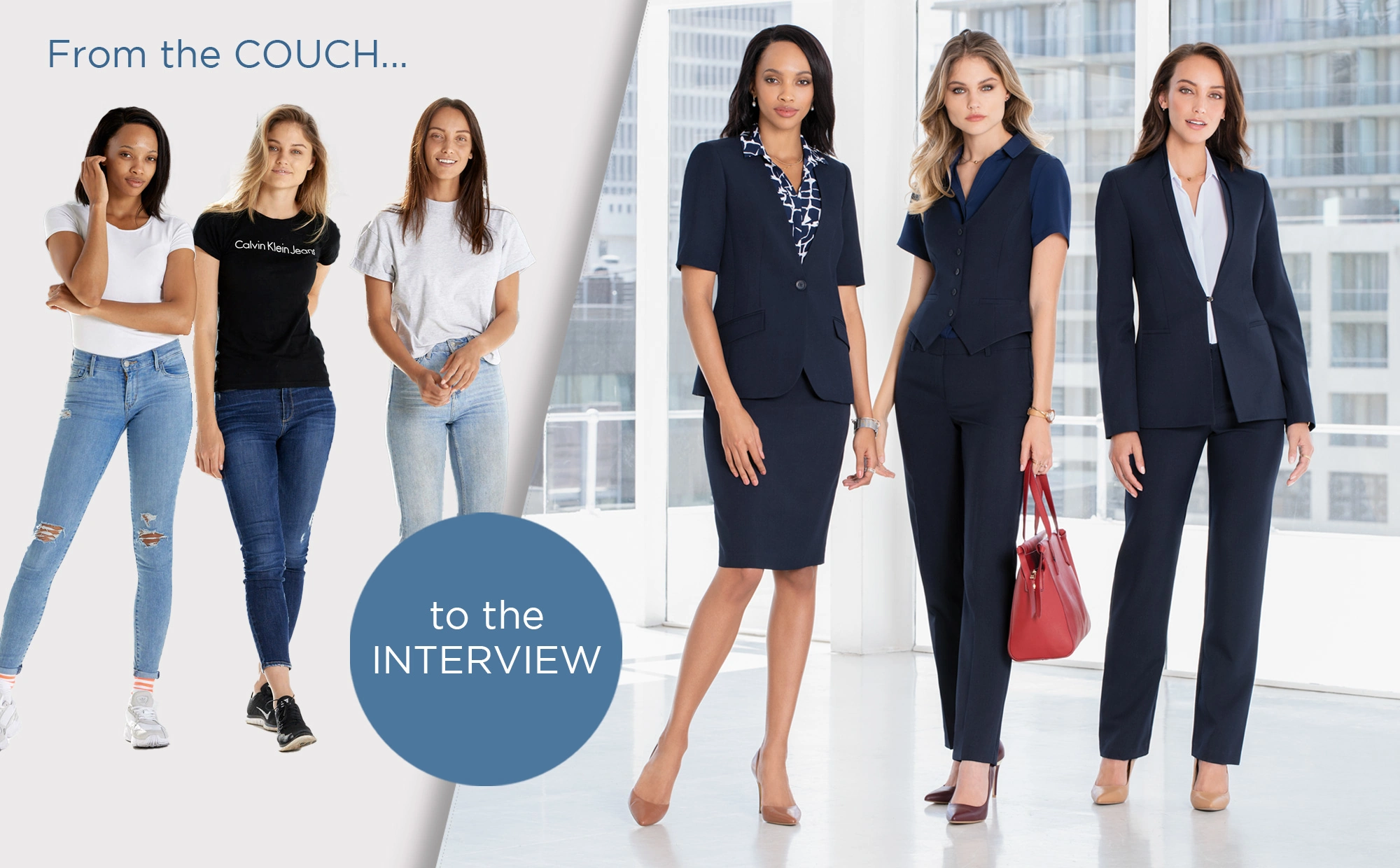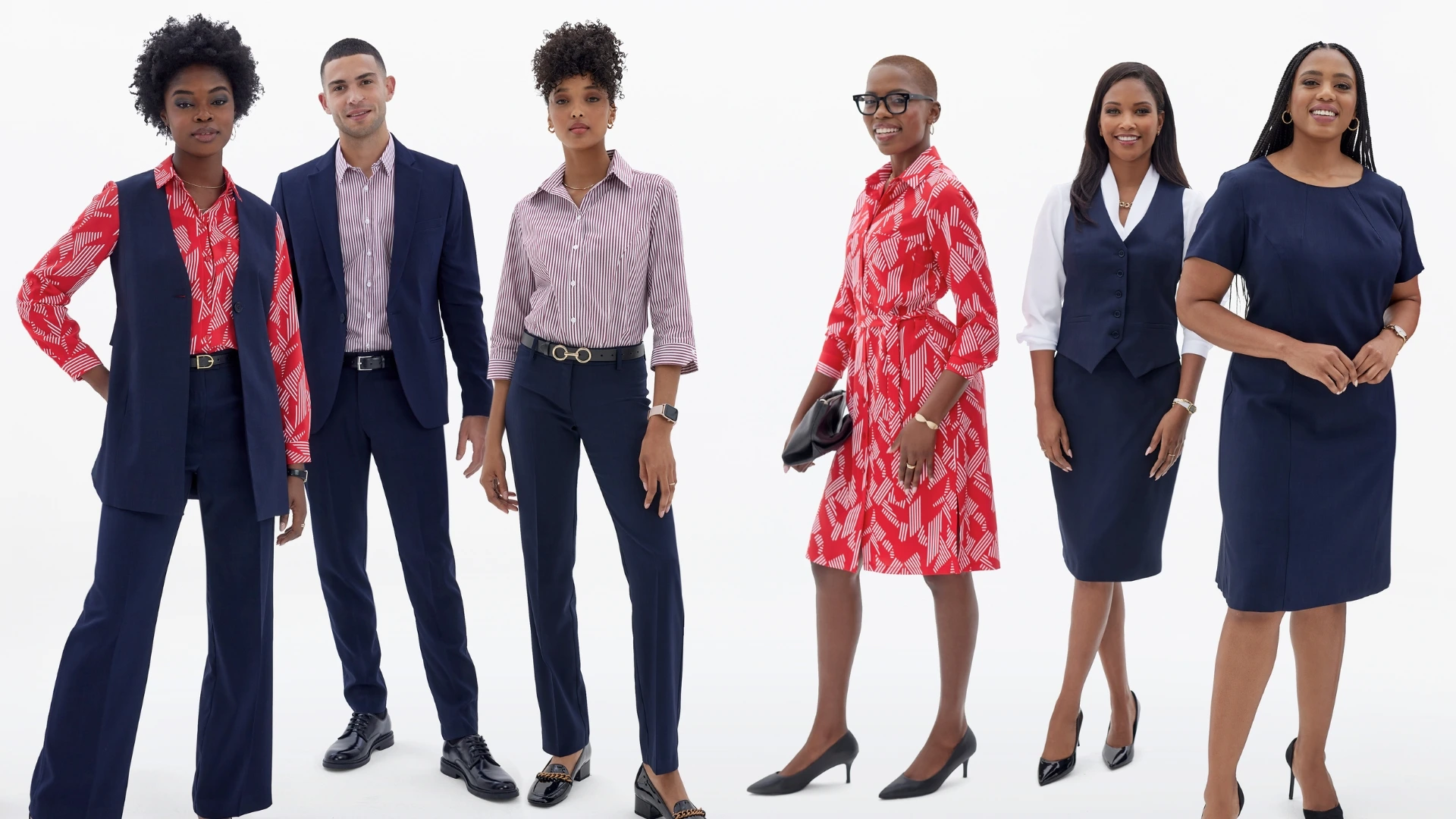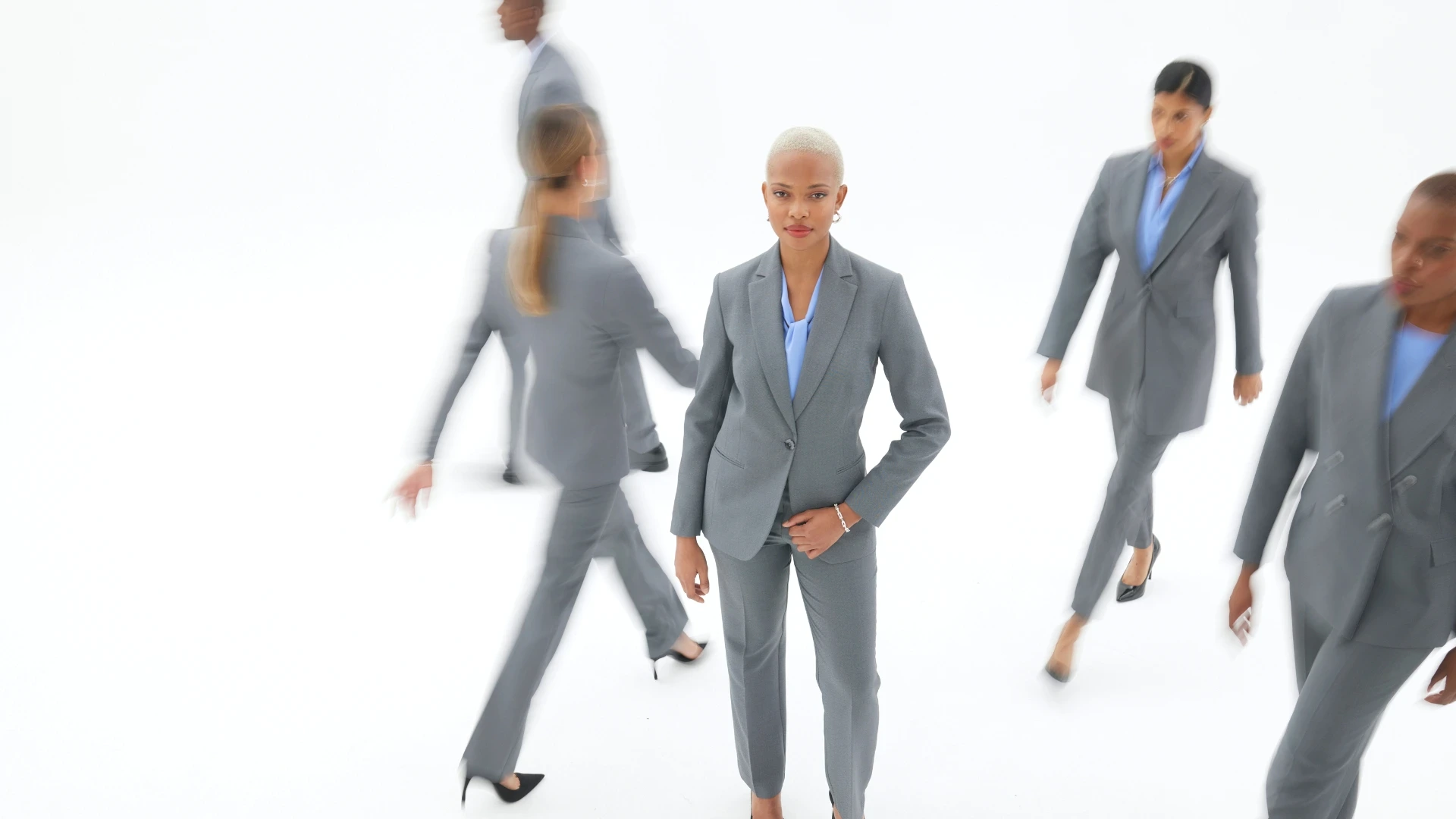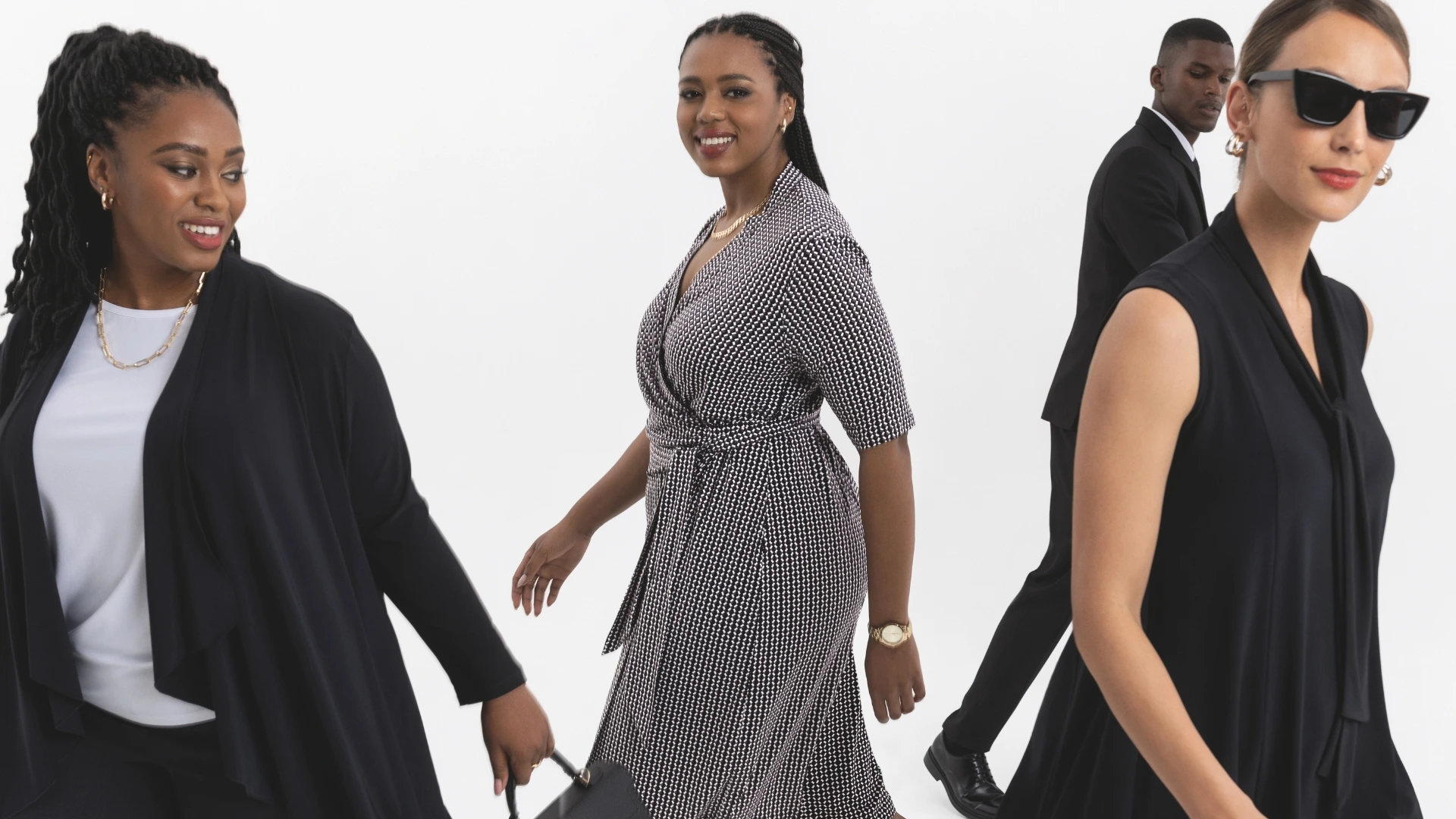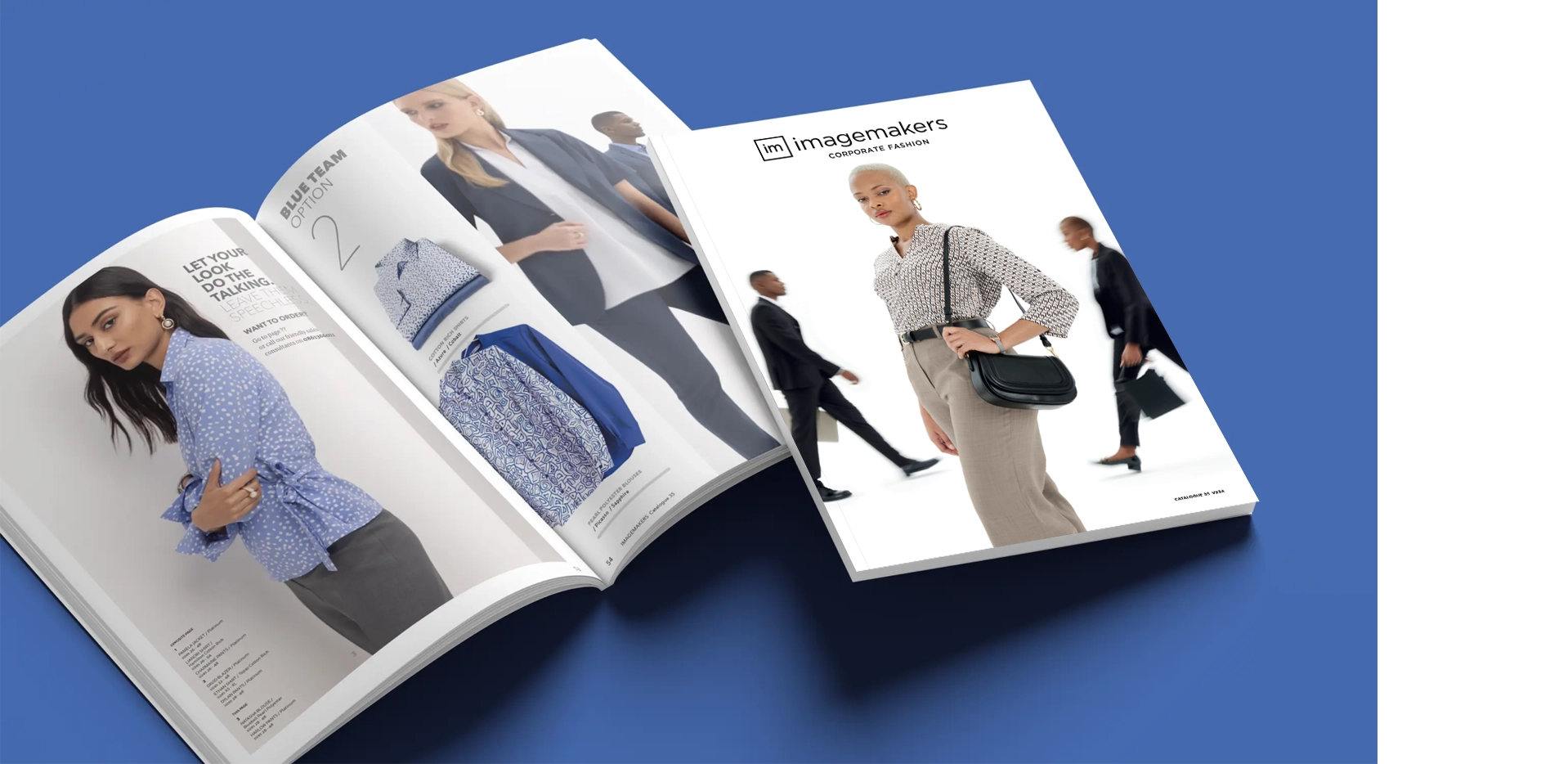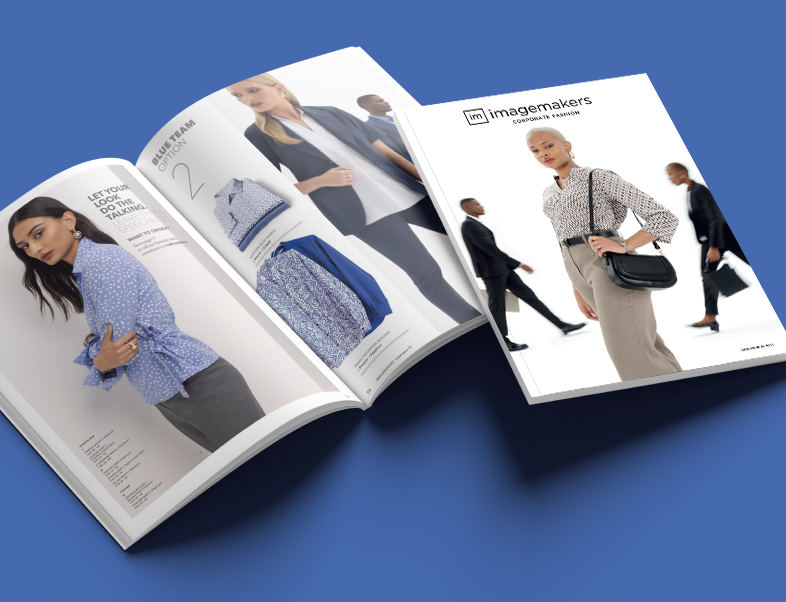Preparing for an Interview
Successfully preparing for an interview has a number of steps. It starts with researching your potential new employee and their job requirements. And it culminates with your arriving early for the interview and putting your best self forward during the interview. It’s the step in-between the start and finish that people often underestimate the importance of. Before you’ve spoken a single word to the interviewer, you have already made an impression based on how you’re dressed. Never forget that you are ultimately marketing yourself as a product. Therefore, putting your best styled foot forwards goes without saying.
Presenting a professional image is more about doing your homework than spending money on corporate wear. A capsule wardrobe, with mix and match items, provides the versatility one needs for work wear. As well as enough choices to stop you becoming bored with your everyday business attire options.
Setting the Right Tone with Your Corporate Wear
Ahead of selecting what you are going to wear, look into what the company work clothes culture is. This is because it’s important to have the correct corporate wear in mind before you decide what you’ll look best in.
Company dress codes range from business formal, business professional and business casual to functional workwear. While you don’t want to miss the mark by being overly formal, it’s still better to err on the side of caution. Therefore, if you’re unsure just how smartly dressed to be, dress things up a bit rather than tending towards casual. For example, go to the interview with a jacket or blazer on. If you’re a touch too smart you can take it off. If the interviewers have dressed up for your interview, then you’ll hit the right tone by keeping your blazer on.
6 Simple Dressing Tips for an Interview
Here are 6 factors to bear in mind when you choose what to wear for your interview.
Interview Tips for Men
Dress in a manner that is professionally appropriate. In almost all cases this means wearing a suit. If in doubt, go conservative don’t dress down.
Even though you want to be memorable, it’s best to stick to block colours and avoid loud, busy prints.
Accessories should be kept smart. If you plan on taking a bag, opt for a smart satchel or briefcase rather than a backpack.
Present yourself neatly. Clothes must be clean and unwrinkled. If you have a beard or moustache, make sure it’s neatly trimmed. Or make sure you’re freshly and cleanly shaven.
If you have leather shoes, make sure they're shiny. If you have suede shoes, ensure that they're brushed.
Coordinate your image. Match your belt to your shoes. And don’t make the fashion blunder of wearing white socks with black pants.
Interview Tips for Women
You want to exude professionalism. Therefore, opt for a more conservative overall-look that’s got subtle accents of personality.
A suit jacket with a skirt or pants is generally the go-to outfit for ladies’ interviews. Think along the lines of a simple dark colour and avoid anything tight, bright, short or sheer.
A sophisticated blouse neatly tucked in is perfect. Avoid wearing bright colours, animal prints, or anything low-cut.
Make-up and nail polish should be understated and flattering. Therefore, shades that are neutral to your skin tone are generally advisable.
Keep accessories to a minimum. You want the interview to focus on what you’re saying, not the bling of your ring, bracelet, necklace or earrings.
Shoes should be fairly low-heeled. Make sure they are in good condition and clean. Choose a pair that you can comfortably walk around in.
While it may be appropriate to dress more casually for a second interview, you must still stay on the professional side of things. Dressing professionally shows respect for yourself, the interviewer, and the company. And your choice of corporate wear might just be the deciding factor that helps you land the job. So, trying on things ahead and planning is savvy. Especially as wearing the right clothes for an interview helps give you an extra boost of confidence.
